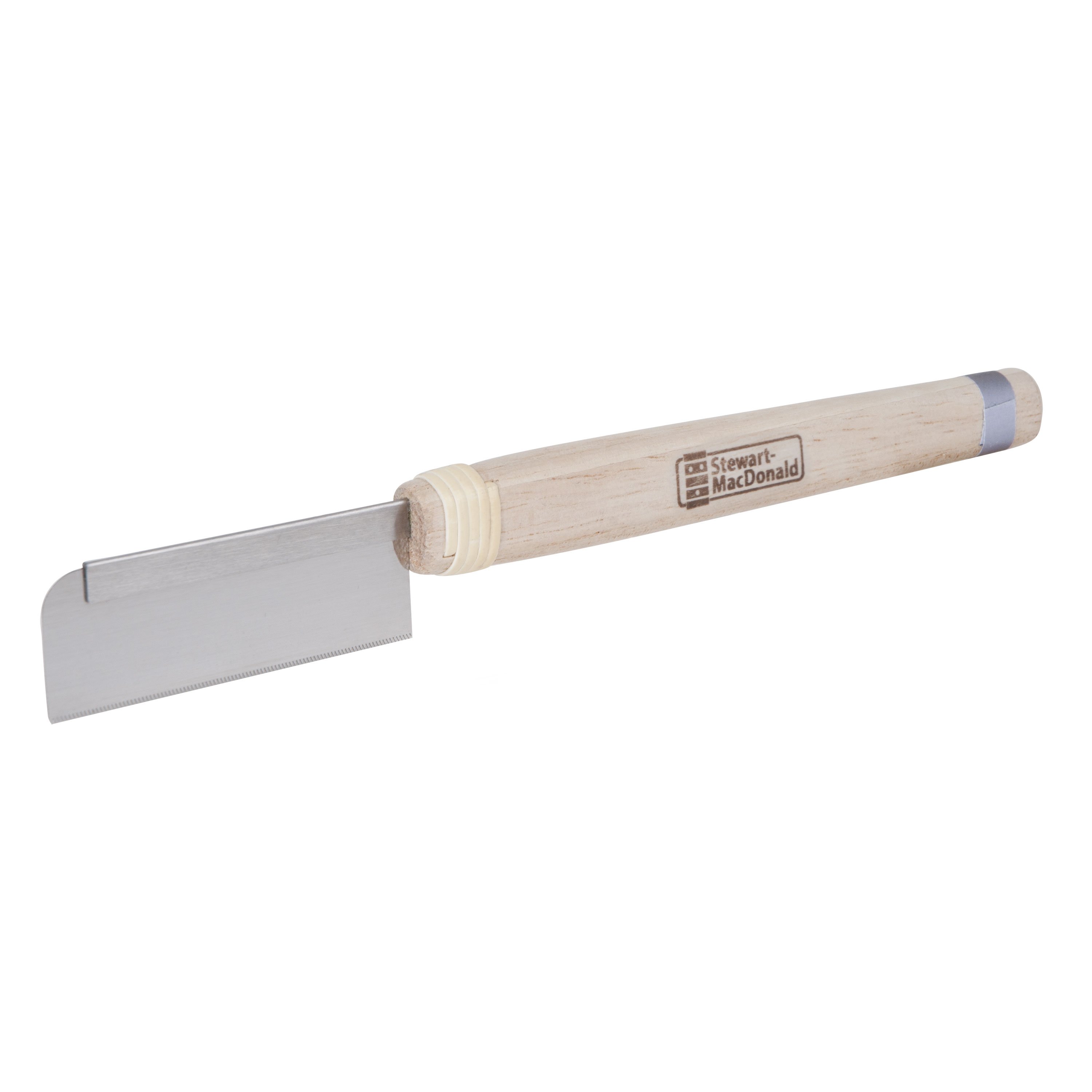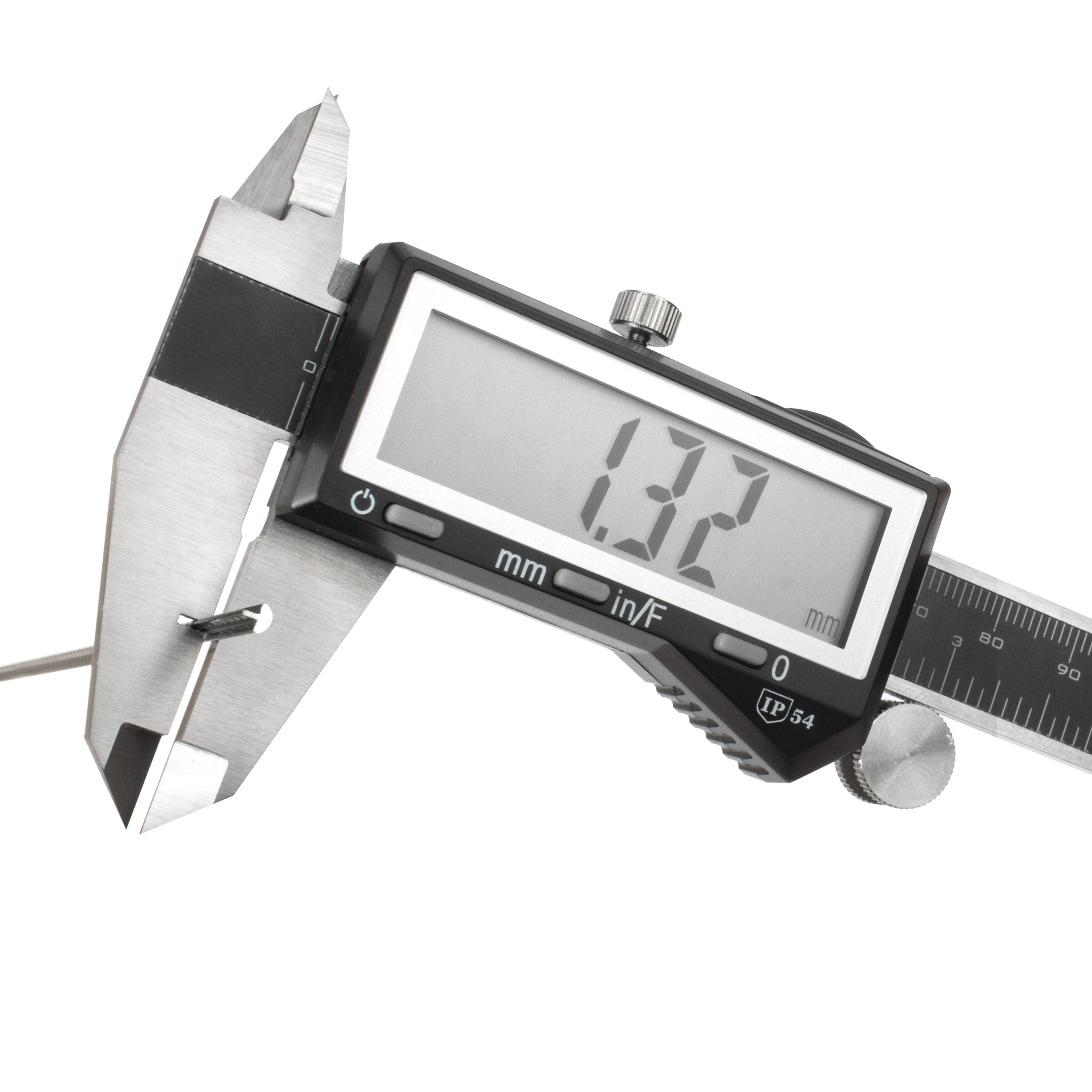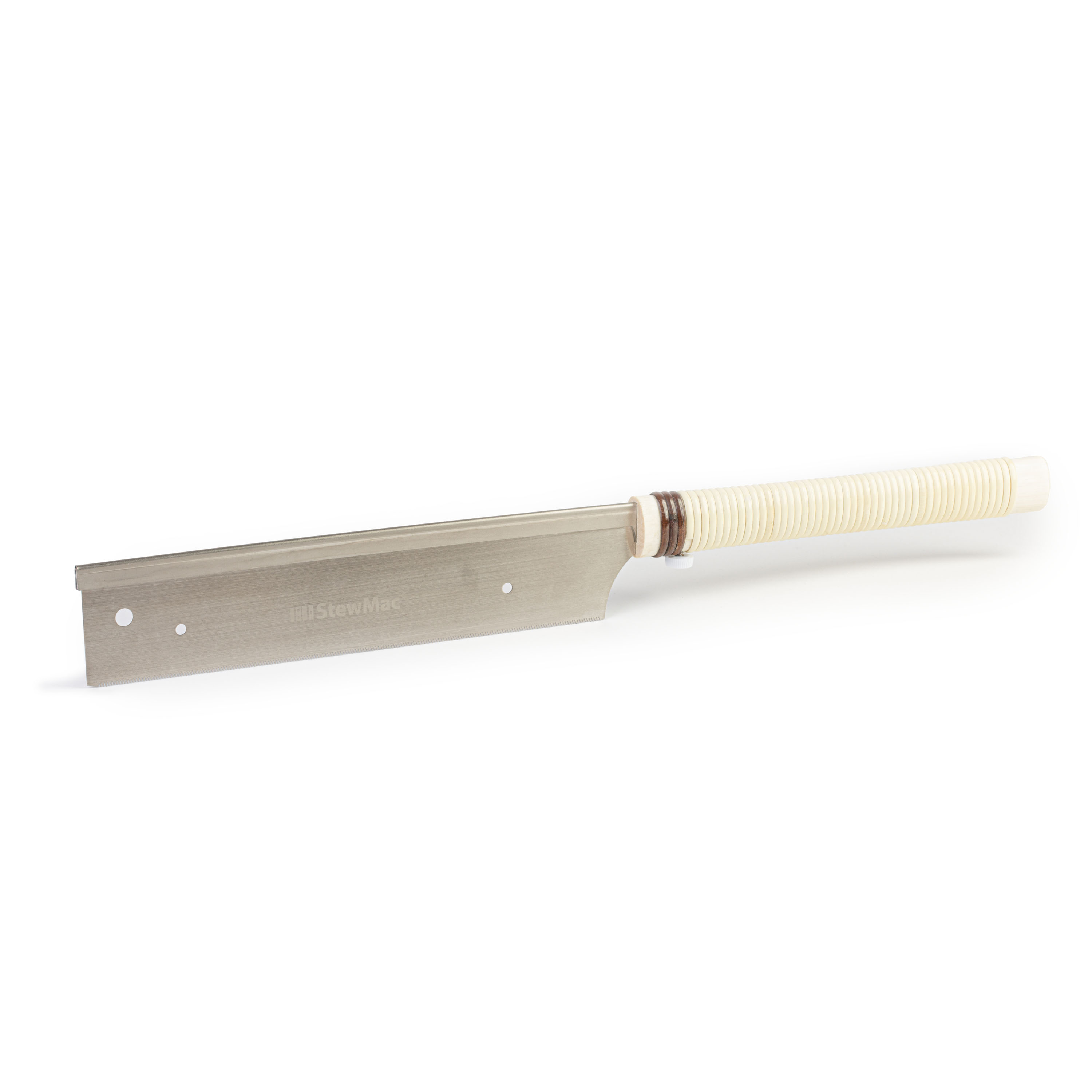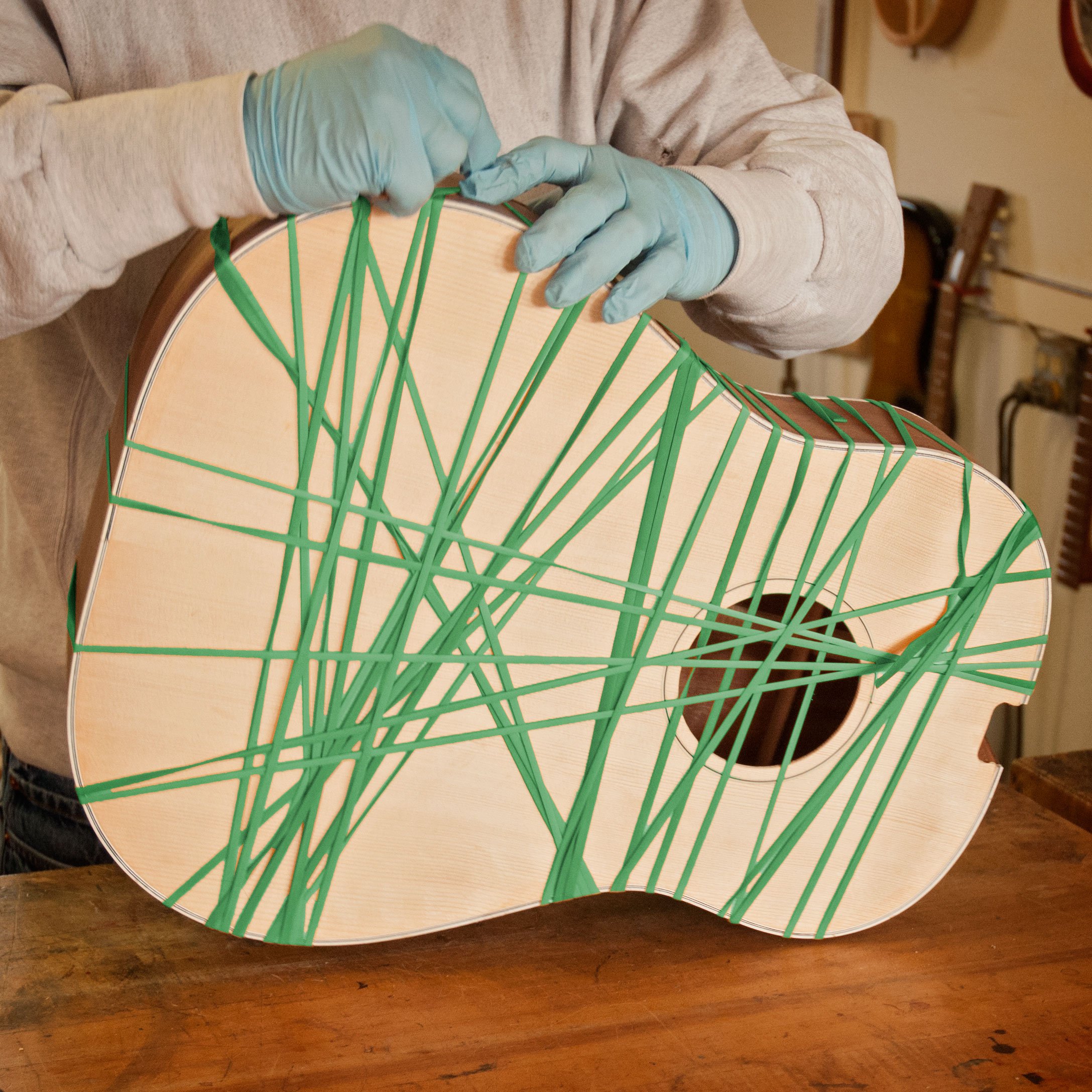Routing for guitar binding: fixing a mistake!
Issue 304 May 03, 2018
OUCH! Luthier Brock Poling was routing for binding on this custom guitar when the router grabbed it and threw it against the wall! Suddenly this build became a repair, and he talks with Dan Erlewine about how to fix it.
- Brock’s custom binding jig
- Two heads are better than one for planning this fix
- Fitting a hand-cut patch
Video Transcription
[on-screen text reads: StewMac tools + ideas for guitarmaking. Fixing a Router Mishap]
Dan Erlewine: In today's trade secrets. I would like to introduce you to my friend Brock Poling. Brock works at StewMac in the marketing department with me and Eric Elliot and Todd, and he is another StewMac luthier. He's built this really cool guitar that he brought in. He's had a little problem. So he's brought it in to show you how we're going to fix it. And I asked him to bring this really cool router setup that he has when he does his binding. It gives him a way of keeping a very parallel line between the back edge and the binding edge.
Brock's custom binding jig
Brock Poling: That's exactly right, Dan. So what I did was I made a jig that holds the router a consistent height from the bottom. So that way, when I route the binding all the way around the guitar, it's always about the same amount of wood showing, but always the tricky part is right here on the horn. And so when I was going around the horn and this was the first time I ever used this jig, it grabbed the guitar, threw it across the room, bounced it off a wall. It knocked a hunk of mahogany out of the side of the guitar.
The original fix
So I thought, well, now I'm going to have to paint this because there's not really going to be an easy way to hide it. So I mixed up some epoxy and Coco Bolo dust, put it in as a paste, let it harden and sanded it all flush. I came back to it and thought, that's not a good fix. We can come up with something better that will allow me to put a translucent finish on it. So that's when I thought I'd bring it over here and let you take a look at it and see what you think.
Planning the perfect fix
Dan Erlewine: I think it's a really cool guitar. No, you wouldn't want to paint over that. I'd put wood in it.
Brock Poling: Okay.
Dan Erlewine: I wouldn't, I would use a saw and a chisel. I could show you what I mean, I would saw right along the binding with the little razor saw and then come out here with the saw, saw there and then chisel it out and put a piece of wood in there. Try to find one that would match these grains. And you could make little pop marks with the pen to give the pores of the grain and then shade over it.
Brock Poling: Yeah. Just shade it just enough to hide it, but then still let all the grain come through. I love that. I think that's a good idea.
Dan Erlewine: Let's do it.
Brock Poling: Okay. Let's do it.
Cutting out the damaged area
[Dan starts sawing the outside edges of the repaired area they are going to chisel out]
Dan Erlewine: It's hard.
Brock Poling: It's hard. That's for sure.
Dan Erlewine: I'm curious to see how it chisels out. This is not an aggressive saw, but it's sharp and skinny [on-screen text reads: Japanese Super Fine-Cut Saw - stewmac.com]. I'm going to get a hammer.
Brock Poling: It's never a word you want to hear when somebody's working on a guitar, right.
Dan Erlewine: I'm going to go in there and peck away at it with a smaller chisel and see which way it wants to go. It's wanting to chip right out on that saw cut. See it.
Brock Poling: Well, yeah. That's, that's actually works to our advantage. Huh? Oh, look at that. Yeah, that worked great [on-screen text reads: Two Cherries Wood Chisel - stewmac.com].
Dan Erlewine: All we got to do is get clean going in and out. That's close enough to think about it.
Brock Poling: Yeah. I think it looks good.
Dan Erlewine: The wall's a little tapered going in. It's tighter at the bottom from the angle that I saw it at. I didn't do that on purpose, but I'm, I'm glad to have it. It gives me a little wedge effect. I can drive a piece in there [Luthier's Digital Caliper - stewmac.com], now let's get a piece of wood. That'll be close to that size. I got some out for you.
Brock Poling: Okay.
Dan Erlewine: This old wood is from the harmony factory when they went out of business. And this is from my great, no, from my grandma's table in the 1920s. When she died, it went to storage and I found it, didn't realize what it was and cut it up and made guitars out of it. This is Honduras mahogany.
Brock Poling: Yeah.
Dan Erlewine: This I'm pretty sure is from StewMac neck blank, but it's pretty good.
Brock Poling: Yeah, when they oxidized. And they'll basically, this is all oxidized. That's oxidized. That's a pretty good match.
Dan Erlewine: Let's make it out of here.
Cutting out and fitting a hand-cut wood patch
[Dan is sawing off a small piece of wood from the wood blank they selected]
Brock Poling: Okay. Let's do it.
Dan Erlewine: We don't need a whole bunch of this. We just need a little piece [on-screen text reads: Japanese Fret Saw - stewmac.com]. Yeah. Just a little chunk of wood. If I can do all this, just with a couple of simple tools, I'll be the happiest.
Brock Poling: Yeah. That's nice fit.
Dan Erlewine: It's not a very big chunk going in there. [with a pencil Dan draws a line on the wood blank following the countours of the guitar body]
Brock Poling: It's not.
Dan Erlewine: We know that. I'm going to go saw that out.
[Dan cuts out the small wood piece on a bandsaw]
Installing the wood filler piece
Brock Poling: I can tell you, I just stuck that in there a second ago. And just to play with it, to see it's fit. It ain't coming out once it goes in.
Dan Erlewine: Nah.
[Dan applies StewMac Fish Glue to the damaged area of the guitar body they cut out]
Brock Poling: Your going to have one shot to get that in where you want it.
Dan Erlewine: It's going to be easy. Because I lucked out. I do my best work with my eyes closed.
Brock Poling: I'm a fan of fish crew. You like that?
Dan Erlewine: It's good for this because it has the qualities of a Hide Glue.
Brock Poling: Right. And you got a little more open time.
Dan Erlewine: Well you're damn right. I'm not going to get it out. Right there. I don't think it needs a clamp.
Brock Poling: I don't think so either.
Dan Erlewine: Rubber bands. That's, that's not coming out. That's going to have to sit until tomorrow and dry. I think you know that Brock could do this on his own. He's trying to show me off and thank you.
Brock Poling: Yeah. Well I like to just come hang out with you Dan.
Dan Erlewine: Now that's going to be perfect. I'm going to let Brock chisel this down later on and you got plans to finish it, right?
Brock Poling: Yeah. I'm just going to put a dark brown on it and that'll should hide that very nicely.
Dan Erlewine: I hope so.
Brock Poling: And so it's going to look great. Yeah. So Hey, I appreciate it.
Dan Erlewine: Thank you so much for coming man. It's awesome.
Brock Poling: Absolutely.





